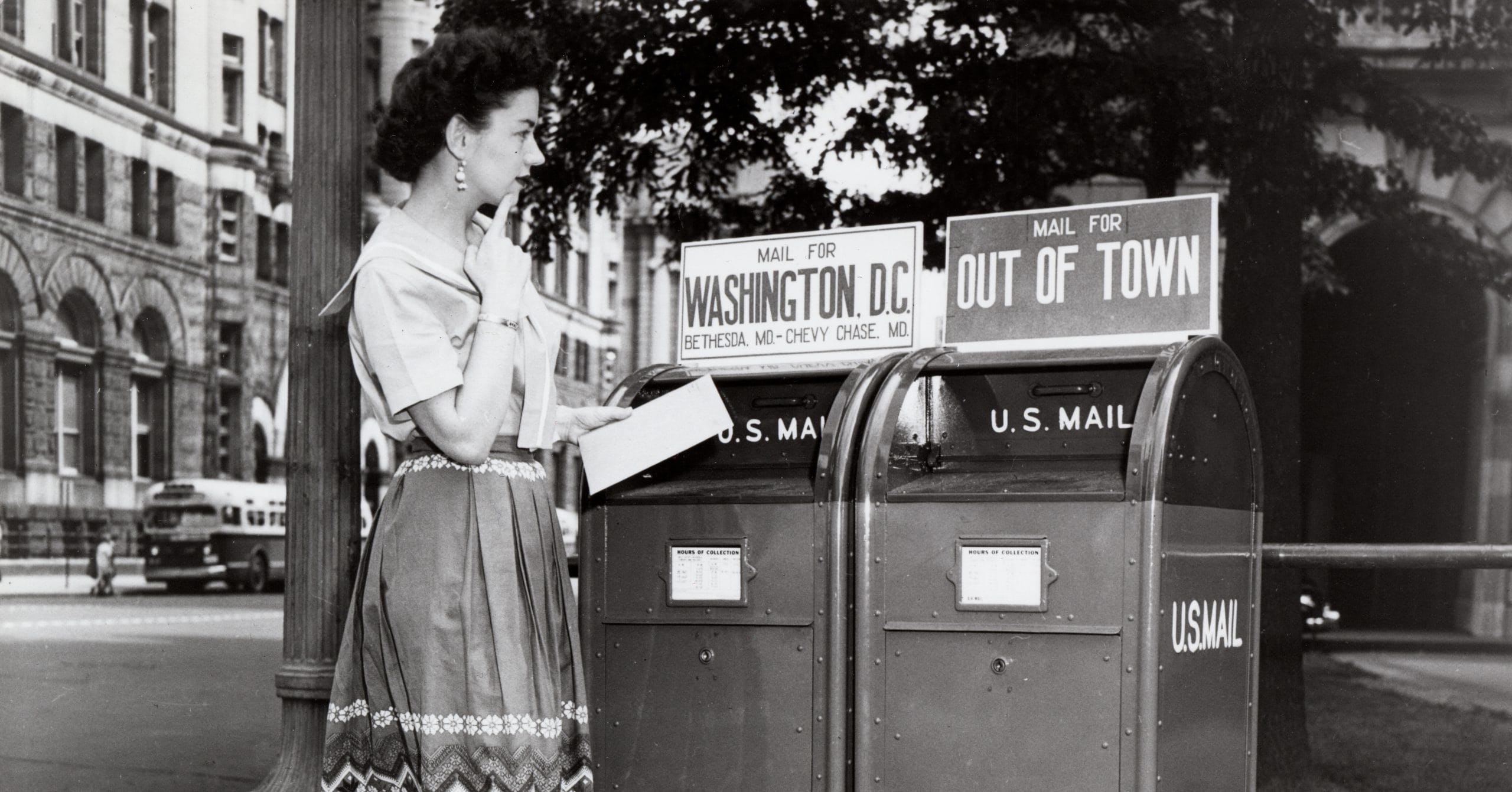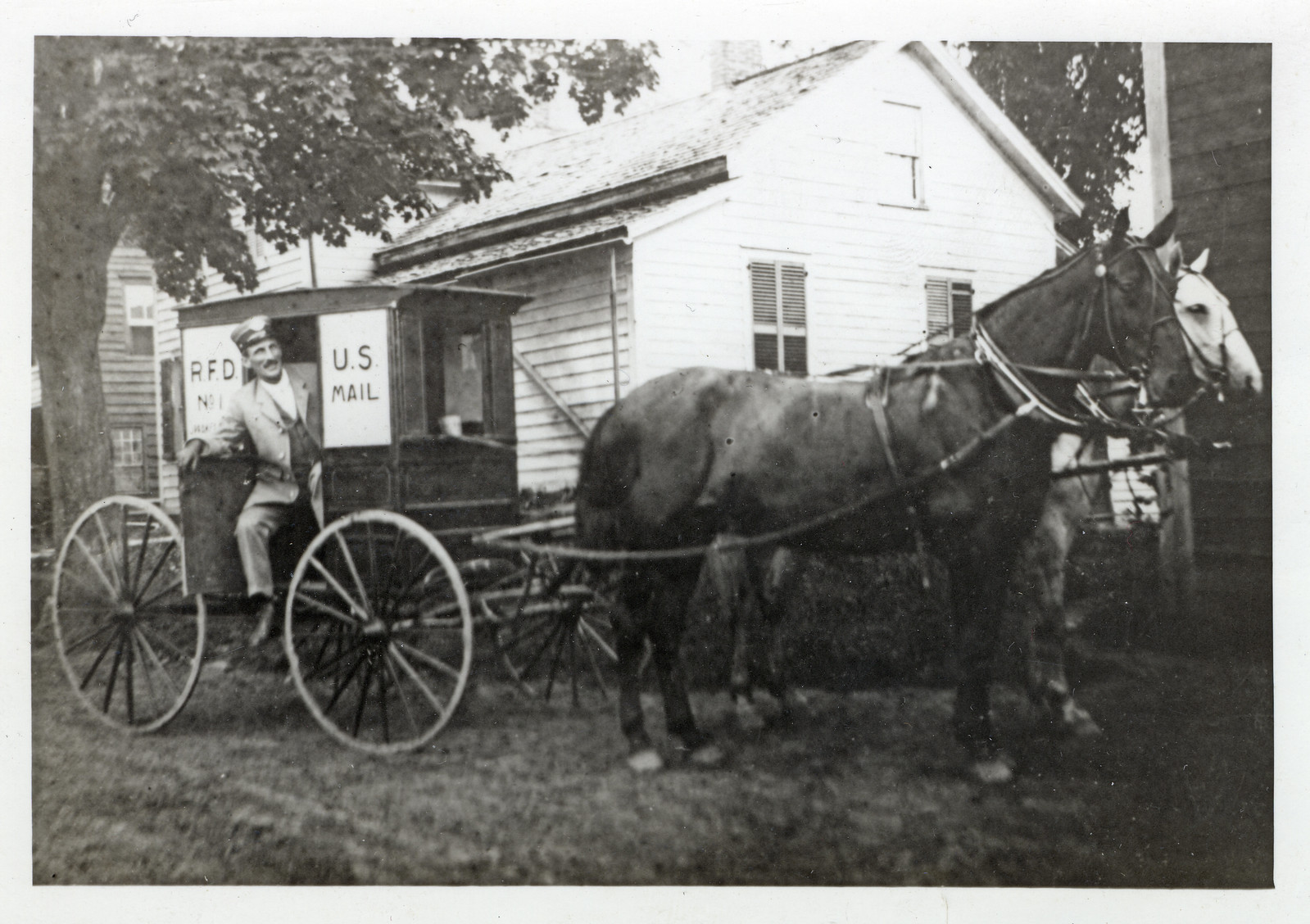There are publications on social networks, the authors of which claim: before the First World War, Americans put stamps on children’s clothes and sent them by mail. We have verified the accuracy of such messages.
For several years, Internet users have been publishing a photograph from the turn of the last century, which allegedly shows a postman and a child in his work bag. Captions to them vary (and sometimes even contradict each other): it can be a succinct “US law allowed sending children by mail until 1913” or quite lengthy stories about how exactly the sending of children was carried out, at what rate they paid for it and what responsibility the employees of the American postal service bore.
Similar posts can be found in numerous public pages on VKontakte, including "5 interesting facts" (4.4 million subscribers at the time of writing this analysis), "Did you know?" (1.6 million), "Interesting to know!" (1 million), #tech (654,000), "Interesting Facts" (256,000), "The History of Humanity" (177,000) and "Wonderful World | Science and facts" (144,000). This statement is also popular in Telegram - examples can be found in the channels "World of Facts" (304,000 subscribers), "Factorium" (231,000) and "Historical Photos" (133,000). Similar publications can be found in Facebook*, Twitter, "Zene" and other social networks.
Let's start with the photographs that Internet users, together or separately, use to illustrate the point about the legality of sending little Americans by mail. There are two of them in total. Both can be found in article, published on the website of the National Postal Museum at the Smithsonian Institution, one of the largest scientific and cultural centers in the United States. In both cases, the photographs are signed as comic (it is even stated that one of them is the most popular in collections museum on Flickr). Similar assessment expressed in 2020 by museum curator Lynn Heydelbaugh.
However, is it possible that, despite the incorrect interpretation of photographs of Internet users, the basis of their publications is correct information? The year 1913 is mentioned in many posts on social networks for a reason. That's when the US Postal Service started accept parcels that significantly exceed the weight of postal correspondence. In other words, until 1913, Americans could not send parcels in principle, and not just with children inside.
Maximum parcel weight first installed at around 11 pounds (about 5 kg), then gradually increased to 50 pounds (about 22.5 kg). At the same time, the US Postal Service did not specify the requirements for items in sufficient detail, and some addressees decided that thanks to this, the new and rather cheap service can be used very freely. For example, in Utah they tried this way transport over a distance of 127 miles (about 200 km) 40 tons (!) of bricks in separate parcels (this turned out to be four times cheaper than transportation by wagons, but in the end the post office refused to deliver the bricks).
This loophole was noticed not only by people who needed to transport building materials from one city to another. January 17, 1913 (two and a half weeks after the US Postal Service began operating parcels) The New York Times told about an unusual letter sent to the US Postmaster General. The addressee from Georgia said that he had no children, but was discussing adoption with correspondents from Pennsylvania. Either jokingly or seriously, he was interested in how a child should be “packed” when delivered by mail. The Postmaster General replied that since children "do not fall into the category of bees and beetles" (the only animals that could be sent in this way), he could do nothing to help the writer of the letter. By the way, a number of publications on social networks say that children were sent according to the tariff for chickens or the tariff for chickens, but they allowed sent by mail only in 1918.
Two weeks later in The New York Times appeared note that in Ohio the child was still sent by mail. True, everything was not as scary as it sounds when put this way: a postman named Vernon O. Little received a baby weighing 10.75 pounds (about 4.8 kg) from his parents and took him to his grandmother, who lived one mile (1.6 km) away, for 15 cents.
The incident turned out to be not an isolated one, and by the next year the distances increased, but the postmen still played the role of accompanying people, and the children were not packed into boxes or bags. So, in February 1914 the press told about a two-year-old boy whose grandmother gave him an identification tag and sent him from Oklahoma to his aunt in Kansas for 18 cents. “The child traveled with postal workers, shared his lunch with them and arrived in good condition,” wrote The New York Times.
Then a similar story happened with five-year-old May Pierstorf. Her parents decided to send the girl to visit her grandparents, but did not want to pay for the train fare. They noticed a loophole in the postal rules, attached 53-cent stamps to the girl's coat and packaged it as a parcel. However, little May passed all the way in a compartment with a relative who worked on the railway, and the postman on duty at the station then accompanied the girl to her grandparents’ house.
The cases described above have several common features. First, children were not sent by mail in the same sense as letters or parcels, that is, in boxes or bales that would be carelessly tossed into a freight car or carriage and then dismantled at the postal station. The child was passed from hand to hand (sometimes literally) to the postman, who delivered him to the recipient (usually a relative). Secondly, parents (as well as some merchants, as in the case of bricks) took advantage of the shortsightedness of the US Postal Service - they did not foresee that the cheapness of processing packages would attract people who would look for loopholes in not the most detailed rules.
American legislation at that time did not contain provisions allowing children to be sent by mail. “Nobody thought anyone would do such a stupid thing,” said Nancy Pope, a historian and co-founder of the National Postal Museum, who worked there from 1984 until his death in 2019. The researcher wrote several texts and gave a number of comments about sending children by mail in America at the beginning of the 20th century, including the largest American media like The Washington Post and our colleagues from Snopes And PolitiFact, interested in English-language posts on this topic on social networks. Pope emphasized that some American parents took advantage of the imperfection of the innovation for a reason. “The credibility of the post office at that moment was almost undeniable,” explains the historian. S Pope agrees and her colleague, US Postal Service historian Jenny Lynch.
At the same time, the number of children whom parents decided to send somewhere by mail was extremely small, and unusual “parcels” traveled only very short distances within the country. Moreover, as Pope points out, in a number of cases not preserved documents or material evidence of the veracity of newspaper reports of that time.
Already in 1914, US Postmaster General Albert Burleson wrote a memo to his colleagues, in which banned accept a person of any age as a parcel. However, press reports about attempts (successful and not so successful) to save money on a train ticket in this way continued to appear in the press for several more years. In 1920, the US Postal Service reinstated released relevant resolution.
*Russian authorities think Meta Platforms Inc., which owns the social network Facebook, is an extremist organization; its activities in Russia are prohibited.
Cover photo: Smithsonian Institution
Half-truth
- Snopes. Were Children Once Sent Through the U.S. Mail?
- PolitiFact. Think again about mailing off your noisy kids
- The Washington Post. Mail that baby: A brief history of children sent through the U.S. Postal Service
- Is it true that Egyptian authorities once issued a passport to a mummy?
If you find a spelling or grammatical error, please let us know by highlighting the error text and clicking Ctrl+Enter.








